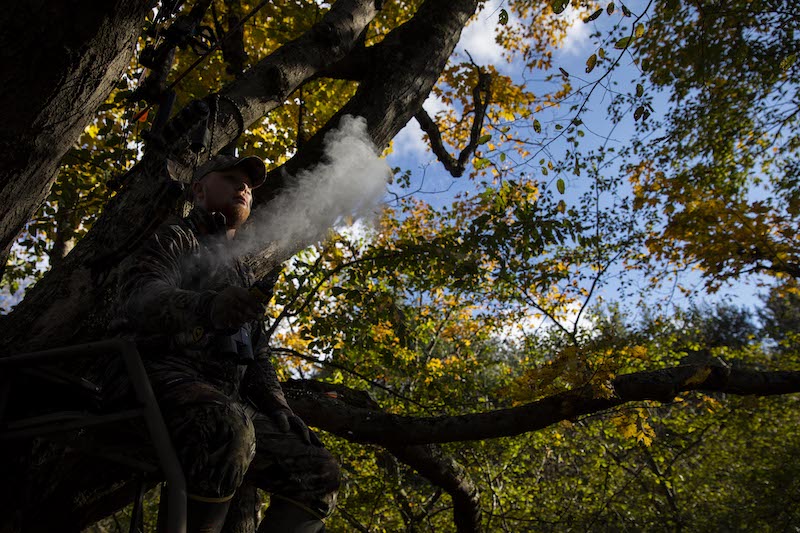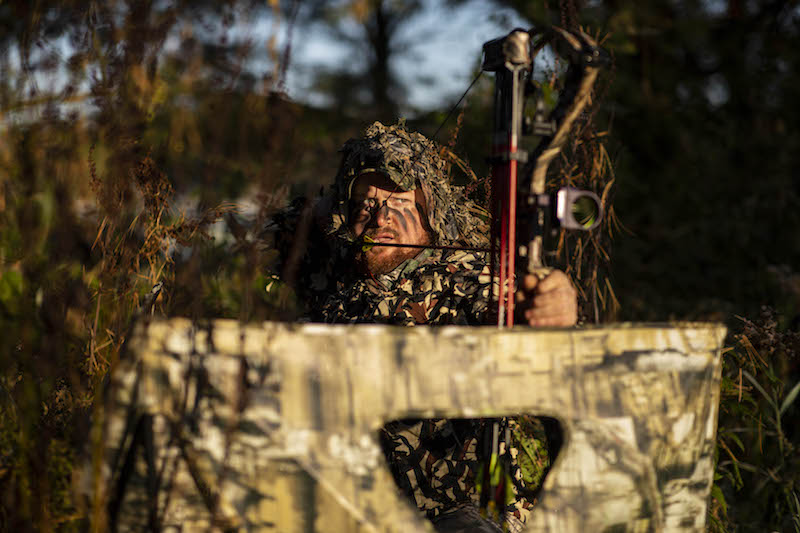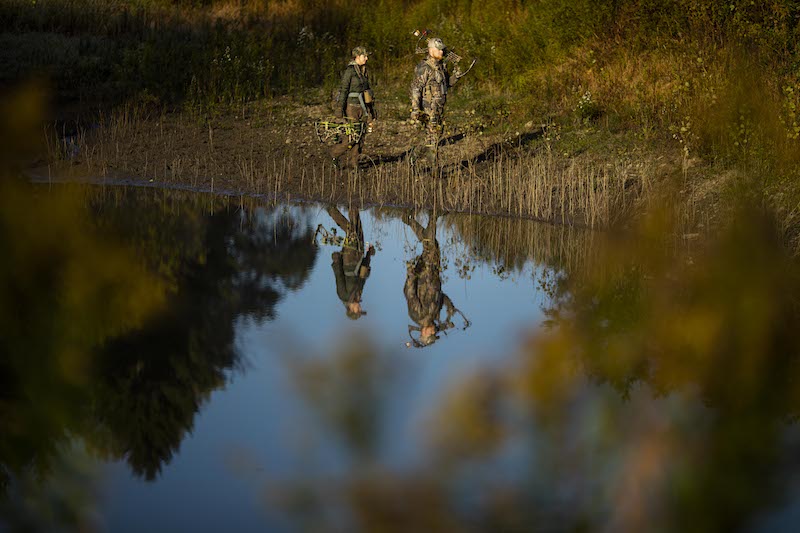The whitetail rut is an exciting time to be a bowhunter. Bucks that are normally wary – even seemingly unkillable – become vulnerable. Raging hormones and relentless breeding desires crowd out a buck’s usual survival instincts. That quest to find receptive does spurs bucks to travel all hours of the day, causing them to show up in unusual areas; even fields in broad daylight. That narrow window when bucks actively seek does might be your best chance to kill a monster buck.
Ambushing a buck during the rut often requires different bowhunting tactics. For example, early in the season, when breeding isn’t a possibility, most bowhunters set up over food sources. As breeding activity picks up, hunting along rub lines and scrape lines can be the ticket. But once bucks start seeking does to breed, it pays to hunt where does hang out.

Identify wind direction, as that will determine where you should place your stand. Photo Credit: ATA
First, identify where does bed during the day. This could be a CRP field, coniferous cover, brushy thickets, or any thick cover in your area. Bucks cruise these bedding areas, usually from downwind, to check for scents of estrous does. The trick is setting up downwind of the does to avoid spooking them while remaining undetected by bucks approaching downwind of you. A rigorous scent-control program can prevent bucks from winding you.
In forest and woodlands, treestands are good choices, but when hunting open terrain, your setups might require creativity. Consider a tripod stand or ground blind. In farm country, you might set up behind a hay bale or an old farm implement. Place these “blinds” well before the rut, if possible, so deer get used to them.

Use ground blinds along trails so you can get as close as possible. Photo Credit: ATA
Hunt along trails entering the bedding area from downwind. Doe-in-heat scents can attract cruising bucks, and steer them where you want them.
Funnels are another great place to waylay bucks. Rutting bucks move along these natural corridors while seeking does, using cover to conceal their movements. You can get away with a little more noise and movement when entering these areas to hunt. When hunting sites where does are bedded, you must be extra cautious to avoid spooking them.
Many features on the land create funnels. They can be brushy fence lines, narrow terrain changes in forests, thick cover along streams, hard edges where two blocks of timber meet at a corner, or any necked-down terrain feature that provides natural or manmade security cover. Bucks might travel these corridors at any time during the rut, so all-day sits can pay off.

Locate streams and water sources if you can. Photo Credit: ATA
Set up your stand in a narrow pinch point that steers bucks into range. If the funnel is too wide to cover with your bow, try strategically placing trees or brush to funnel deer closer. In many areas, however, such as fence lines and stream corridors, deer lurking in cover should be in range.
A third approach to rut hunting is to use a buck’s breeding desires against it. Set up where you can see far, such as forested field edges, or in a tripod stand in a brushy field. If you spot a cruising buck – whether at 100 yards or a half-mile – challenge it with aggressive calling. That buck wants to breed so bad that if you act like a rival, that buck might march in to drive off the competition. Rattling, grunting and snort-wheezing can bring distant bucks close.
You can also use a buck decoy to hold the buck’s attention and sell the ruse. Place the decoy upwind of you, facing downwind. The buck will approach the decoy from downwind and facing the decoy. As it passes you to challenge the decoy, it presents a broadside or quartering-away shot. Be ready. A testosterone-crazed buck wants to display dominance and might attack your decoy! Calling and decoying bucks is an exciting way to hunt.
When testosterone courses through a buck’s veins, everything you think you know about deer behavior can change instantly. Bucks become bold, they move at any time, and they often behave unpredictably. To capitalize, plan all-day sits. Whether you ambush bucks while they search for does or get aggressive and call them in, get ready for some of the season’s most action-packed hunting!